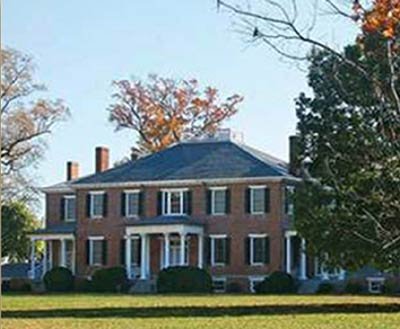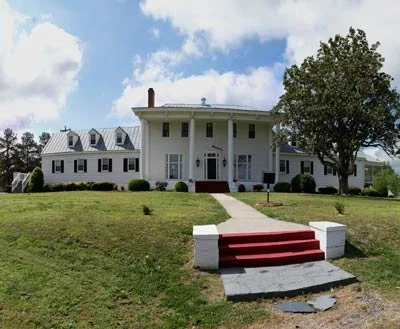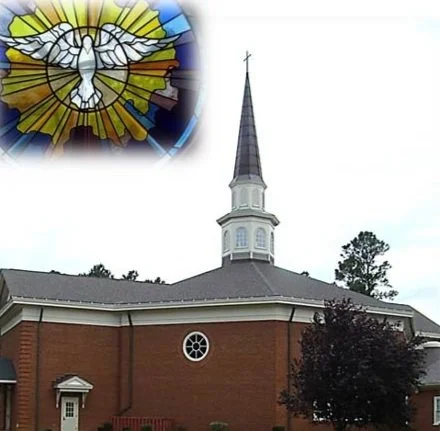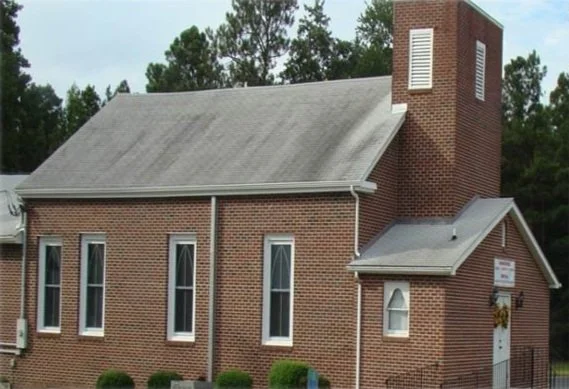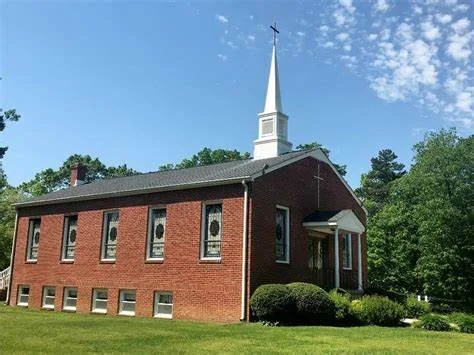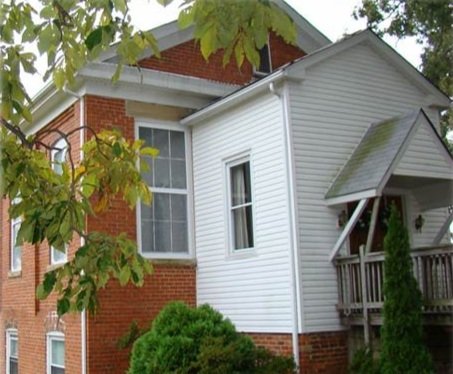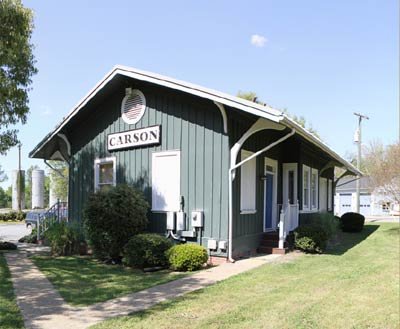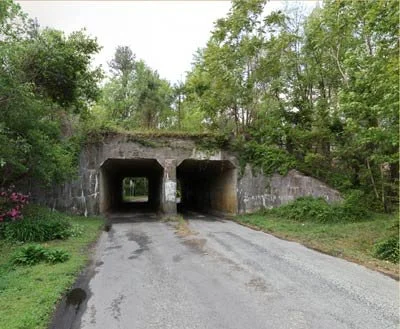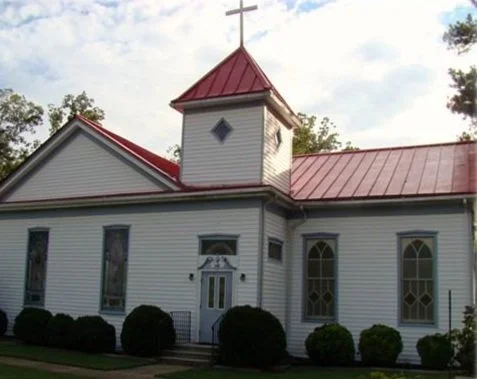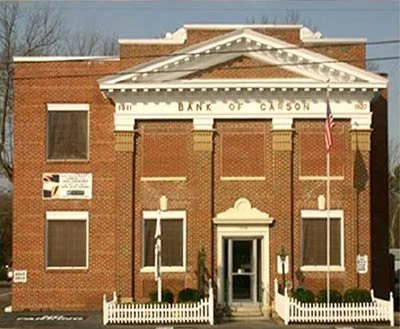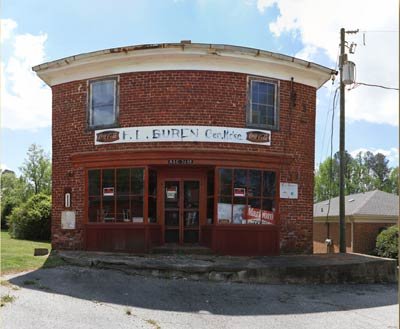
Local Historic Sites
Plantations
Along the James River, plantations sprang up from the early land grants. Tobacco was the “gold” of the colonies requiring expanses of land and labor to support that economy. Although owner names have changed, many of the plantation homes still stand and a drive along the roads that surround them is truly a step back in time. Note: Unless noted otherwise, sites are privately owned and not open to the public. Please contact the Heritage Center for more information.
Education
Evergreen is a plantation home built by the Ruffin family in the early 1800s. It is the birthplace of Edmund Ruffin, noted agriculturist and secessionist. Learn more about Edmund Ruffin on our “People” tab!
National Register Property
A late eighteenth century home, Aberdeen, was built by Thomas Cocke. Its notable architectural features include hand-done reeding around windows and doors, unique mantels in each of the main rooms, and a transverse hallway that opens for ventilation at each end. Edmund Ruffin used Aberdeen’s farmland for some of his agricultural experiments.
National Register Property
Appomattox Plantation started from a land patent granted to Captain Francis Eppes at City Point in 1635, and the plantation house was built in 1763. It served as headquarters for General Grant during the Siege of Petersburg from 1864 to 1865. City Point was annexed by the City of Hopewell in 1923. Appomattox Manor is now owned and operated by the National Park Service as a part of the Petersburg National Battlefield.
Open to public, seasonal hours may be in effect. Please call ahead: (804) 732-3531, 1001 Pecan Avenue, Hopewell, 23860. National Register Property.
Formed from a land grant in 1616 to John Martin, an original Jamestown settler, Martin’s Brandon Plantation features a house built in 1765 by Nathaniel Harrison. The plantation remains an active farm enterprise, making it one of the longest running agricultural operations in the United State.
National Landmark Property
Upper Brandon divided from the original Brandon land in 1807. It features a main house erected in 1825 with wing additions completed in 1859. It was originally home to William Byrd Harrison. Upper Brandon continues to be an active farming operation today.
National Register Property
Built by Williamson Simmons on Second Swamp near present day Disputanta, Chester Plantation’s architecture of Greek Revival was unique to the county in 1845. It was later owned by local philanthropist and business leader, Remmie Arnold.
National Register Property
This early grist mill (dates unknown) at Lee’s Mill Pond was the site of a Civil War skirmish in 1864.
Bland Family Cemetery is near the site of the family home on Jordan’s Point. Believed to be the burial site of Richard Bland along with thirty-eight other family members. The cemetery is owned and maintained by the Prince George County Regional Heritage Center. Learn more about Richard Bland on our “People” tab!
Open daily. Jordan Parkway: first right turn inside Jordan on the James.
Historic Churches
Throughout its history, the churches of Prince George County have served as more than just houses of worship. They have been focal points for a wide variety of community and cultural activities as well as strongholds in the history and heritage of the area. Note: Unless noted otherwise, sites are not staffed full time. Visitors are encouraged to contact the Center to arrange a tour/visit. Visit the “Contact” page for more information.
Founded with a 1618 land grant to Sir George Yeardley, Flowerdew Hundred was the site of the first windmill in North America. In 1864, forty percent of the Union Army crossed the river here using a pontoon bridge and landing at Windmill Point.
National Register Property
Martin’s Brandon Parish, established as part of John Martin’s land grant in 1616, is on its fourth structure. The original church and its replacement structure are believed to be located at the plantation of Martin’s Brandon in the area known today as Church Pastures. Burrowsville became home for the third and fourth church structures. The church’s communion silver dates to the 17th century.
18706 James River Drive, 23842
Merchant’s Hope Church was established in 1657 as a parish. The current building was constructed circa 1740 and remains an active parish church, one of the oldest in the nation. The parish possesses a 1639 New Testament attached to a 1640 Old Testament, which is on display at the Heritage Center!
11500 Merchant’s Hope Rd. 23860
Established in 1714 and believed to be the first Baptist Church in Virginia, Oakland Baptist Church became the Oakland Czech-Slovak Baptist Church in 1923. It remained primarily a Czech speaking group until the 1950s.
12601 Prince George Drive, 23842
Gary’s United Methodist established as part of the revival of Methodism in 1787. The current building dates back to 1880.
13501 Sunnybrook Rd, 23805
Burrowsville is the home to Salem United Methodist, founded in 1868. Originally “Salem Methodist Protestant Church as indicated in the glass above the doorway, the church stands in its original location. Its name is derived from the Hebrew word “Shalom,” meaning peace.
Route 10 and Lebanon Rd, 23881.
Shiloh Baptist Church was founded in 1836. Its current church building, from 1884, stands on the original site near the village of Carson.
18310 Halifax Road. 23830
Dating back to 1844, the original Sycamore Church was located two miles east of its current location. Skirmishes in the Great Beefsteak Raid took place here. The present day structure was built in 1875, using as much salvage as possible from the original.
9710 Old Stage Road, 23875
First Baptist Church, founded in 1850, in the village of Disputanta as “Little Hill Baptist Church.” Its name was changed in 1931.
10209 County Drive, 23842.
Faith Lutheran Church, deeded in 1858 as Mount Sinai Methodist Church. The congregation of Faith Lutheran purchased the building in 1972 after Mount Sinai merged with the congregation of Newville United Methodist Church.
8211 Prince George Drive, 23875
Pleasant Grove Baptist Church was organized in 1865 by freed slaves. Services were held under a bush arbor until a small log building could be built. The second church building remains a part of the Prince George Courthouse community, no longer used by its original congregation.
4405 Prince George Drive, 23842
Harrison Grove Baptist Church was established by an African American congregation in 1865. Founders came from First Baptist Church, Harrison Street, Petersburg. A schoolhouse where black children went to elementary grades is also on the property.
10415 Merchant’s Hope Rd, 23860
Started in 1868, Union Branch Baptist Church was originally located on Mill Road. Its memorial windows and pulpit from the original church are installed in this newer church building.
3356 Union Branch Road, 23805.
Salem United Methodist Church was founded in 1830 in a log cabin. The current building was dedicated July 5, 1892.
19312 Templeton Rd. 23830
Lebanon Baptist Church, as with many of the early churches, was originally a log structure. It was founded, post-Civil War, in 1869 in the same location as today’s modern building.
13800 Lebanon Rd, 23842.
Established in 1875 as non-denominational, Rosewood Presbyterian Church became Presbyterian in 1927. Its name comes from the donor of the land (Rosa) as well as for the woods that surrounded the chapel in its early years.
5500 Oaklawn Blvd (Route 36), 23860
Rising Mount Zion Baptist Church was founded in 1876. The congregation called it “Jesse’s Church” in reference to its founder, Deacon Jesse Williams. The congregation originally met under a brush arbor on James Parham’s farm. Wings to the original wooden structure are twentieth century additions.
2800 Templeton Rd, 23830
Originally called “Evan’s Church”, Loving Union Baptist Church began with worship services on the Evans Farm. Worship “under the cover of trees” was recorded prior to 1878 when the first building was erected, which was a one room structure.
16750 Loving Union Rd, 23842
Mount Hope Baptist Church organized in 1878 with meetings originally under a brush arbor. The Church took its current name in 1880. The Congregation acquired the Bethel Church building for its first structure and used it until it was destroyed by fire in 1949. The structure in use today was built in 1950.
10300 Lawyers Rd, 23875
Founded in 1882, Newville United Methodist Church was termed Methodist Episcopal. It was located on land donated by L.J. Hobbs in the village of Newville.
9014 Hines Rd, 23843
Trinity United Methodist Church was established in 1883 as the union of three churches: Warwick, Centerville, and the new Disputanta church.
10021County Drive, 23842
Gregory Memorial Presbyterian Church originally held services in the 1883 County Courthouse. Named for its founding minister, the Rev. William F.C. Gregory, its original sanctuary still stands in the center of the County Courthouse community.
6300 Courthouse Road, 23875
Morning Star Baptist Church was founded in 1885. A new sanctuary was built in 2008. The cross from the original building is in place on the new building.
19121 Brandon Rd, 23881.
One of the earliest Slovak churches, Bethlehem Congregational Church was established in the community known as Begonia in 1894. It originally met at the Mistr home. The Church structure was completed in 1898.
10501 Pole Run Road, 23842
The Church of the Sacred Heart is the remaining symbol of the nucleus of Czech families that settled after the Civil War to form the community of New Bohemia. Today’s Church structure is the third, the first having been erected in 1906.
National Register Property
9300 Community Lane 23805.
St Paul’s Slovak Lutheran Church Site was organized in 1904 and services were conducted in Slovak. Building taken down in 1997, cemetery remains.
First Bohemian Presbyterian Church was established in 1908 on land donated by the Vtipil Family. The name was changed in 1920 to the First Czechoslovak Presbyterian Church in recognition of the Bohemian revolt against Austria. The final service of the Presbyterian Church was Easter, 1984. Today it is the home of the Prince George Baptist Church.
Middle Road at Prince George Drive, 23875
Commerce
From our earliest days, America’s entrepreneurial spirit has been an important part of life in Prince George County. Here are some key locations that played a part in the history of Commerce within the County.
The Bank of Carson was founded in 1911. This current building dates from 1927. It is one of several local banks that merged to form what is today the Bank of Southside Virginia. The building serves as the headquarters for BSV.
Built circa 1870, the F.L. Buren Store supplied both visitors and the courthouse community until it closed in 1983. Its location along the old stage route and across from the courthouse made it a focal point. It was torn down in 2016.
Cumming’s Store (dates unknown) is one of many smaller general stores that populated the County during the twentieth century.
Railroads were a key to growth in the 19th century. The rail town of Carson was established between 1890 and 1910. The depot building now serves as a branch library for the Appomattox Regional Library System.
Disputanta was established in 1853 as a thriving railroad community, being one of several in the County. This rail underpass (circa 1914) remains in use today.
The Richard Bland College of the College of William and Mary was established by the General Assembly in 1960. Richard Bland is the only Junior College in the Commonwealth and is named after a County native son and patriot.
Originally built in 1956 for African-American students, the J.E.J. Moore School was named for an early black educator who served as head of the Disputanta Training School. In 1964, the J.E.J. Moore principal, Dr. William Clayborn, became the first African-American principal of an integrated school in a Virginia.
Site of the Disputanta Training School, where African-American students were educated until J.E.J. Moore School was built. After 1956, the school became the Bessie Mason Elementary School.
Now N.B. Clements Junior High School, Prince George School was built in 1953 to serve white elementary and high school students when the school districts of Hopewell and Prince George split into separate units. The building later became the county high school.





